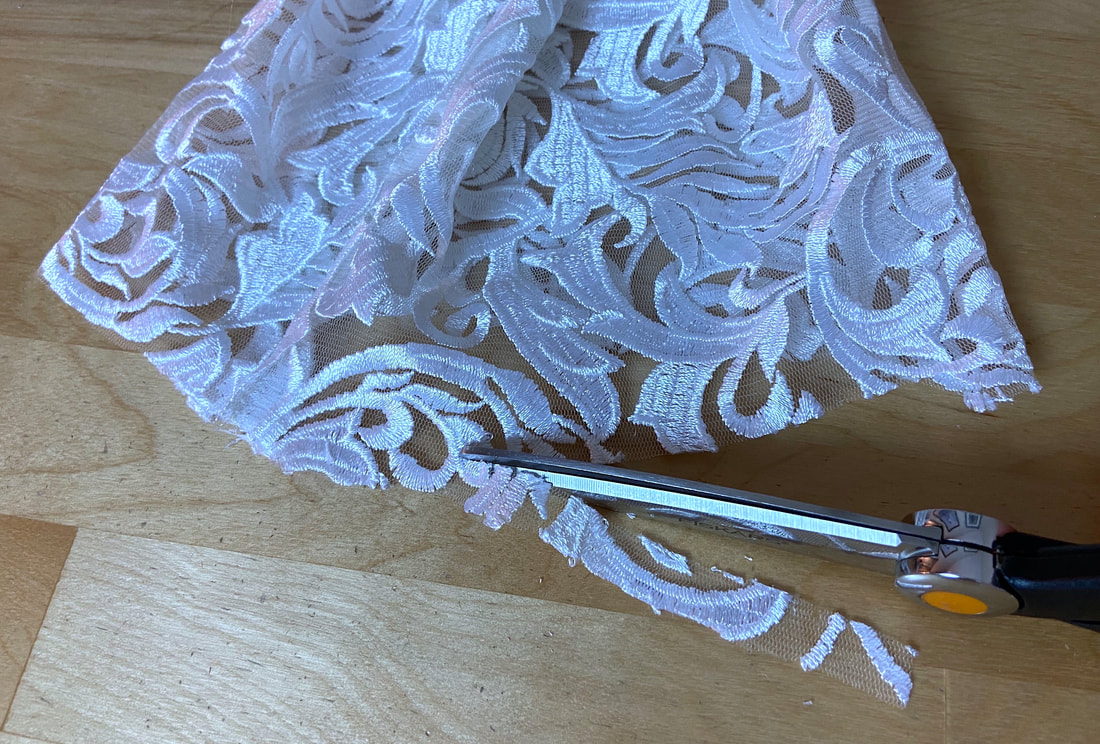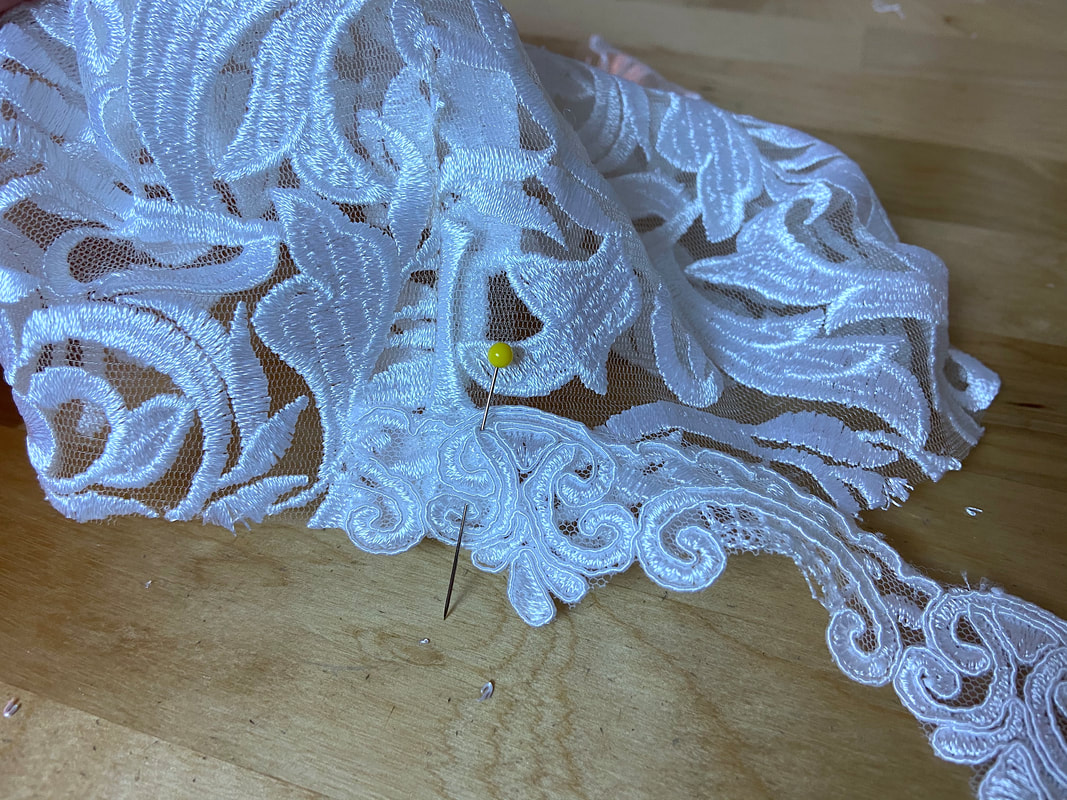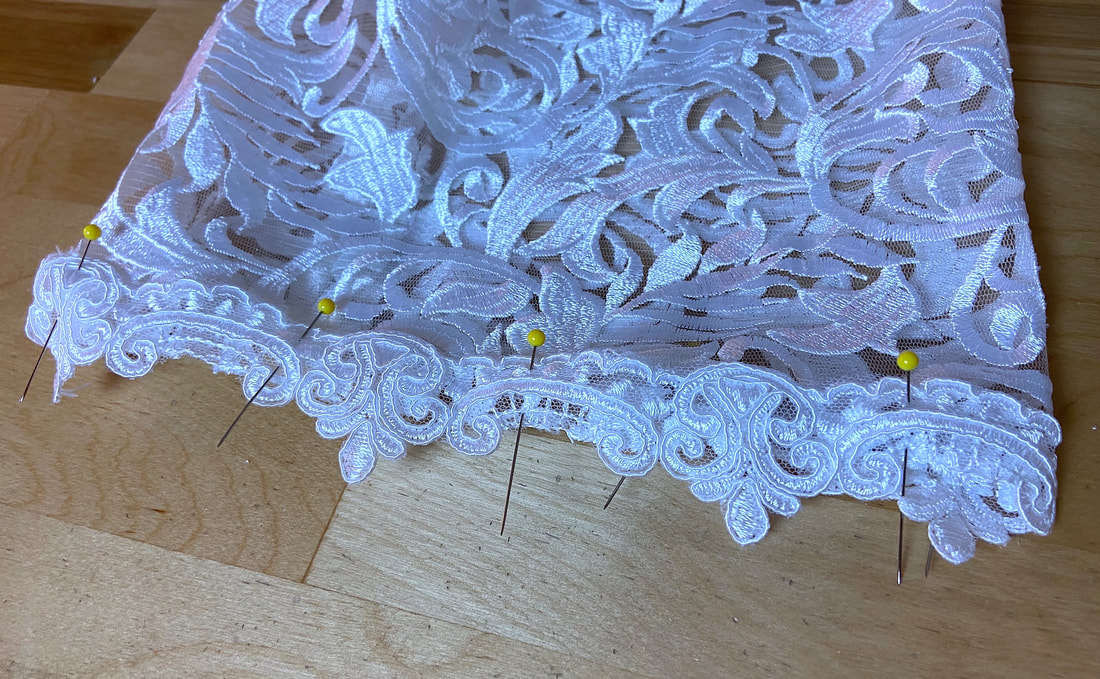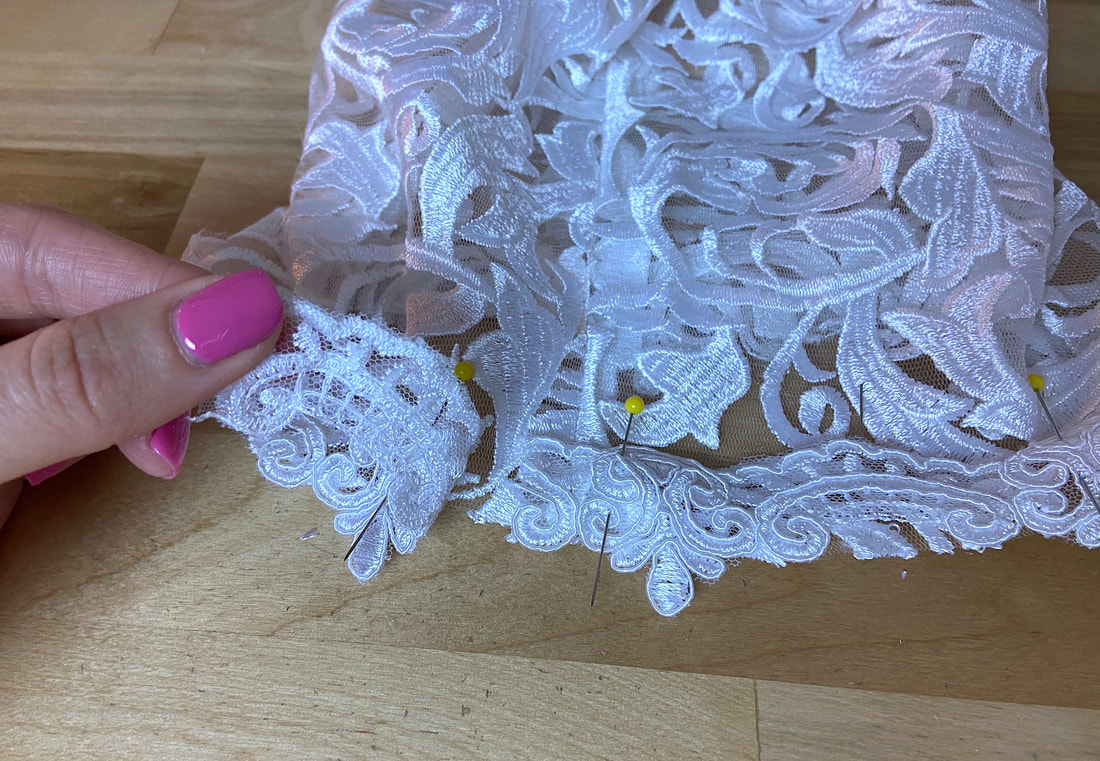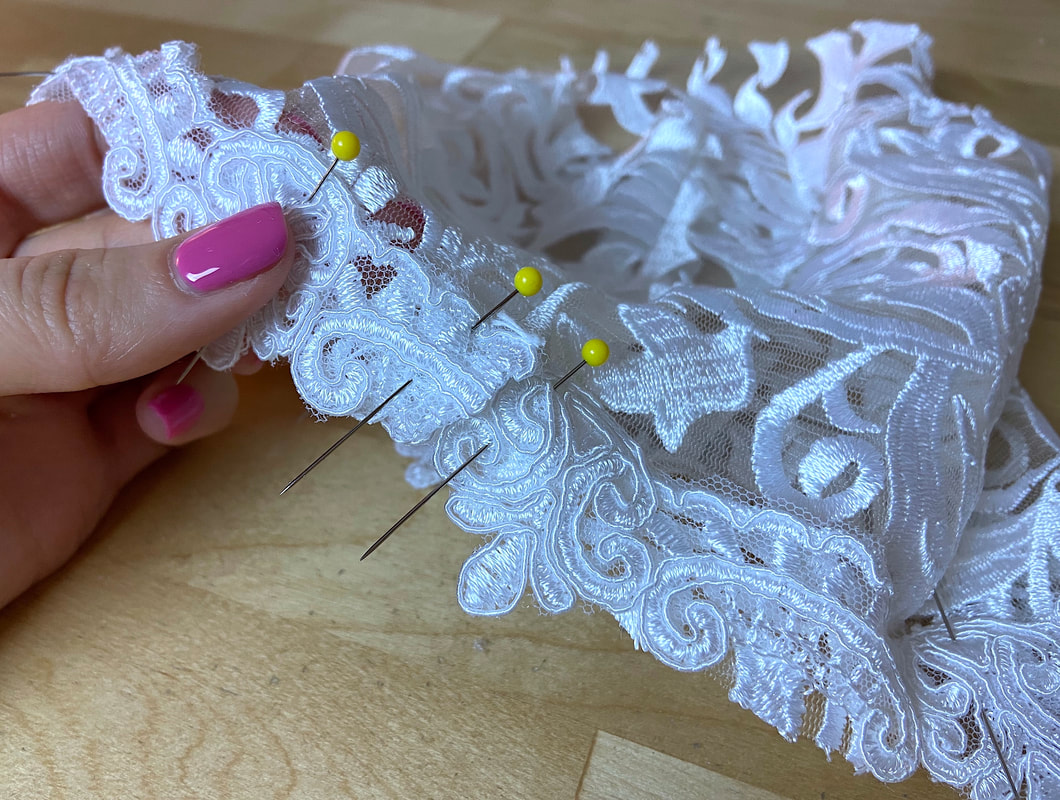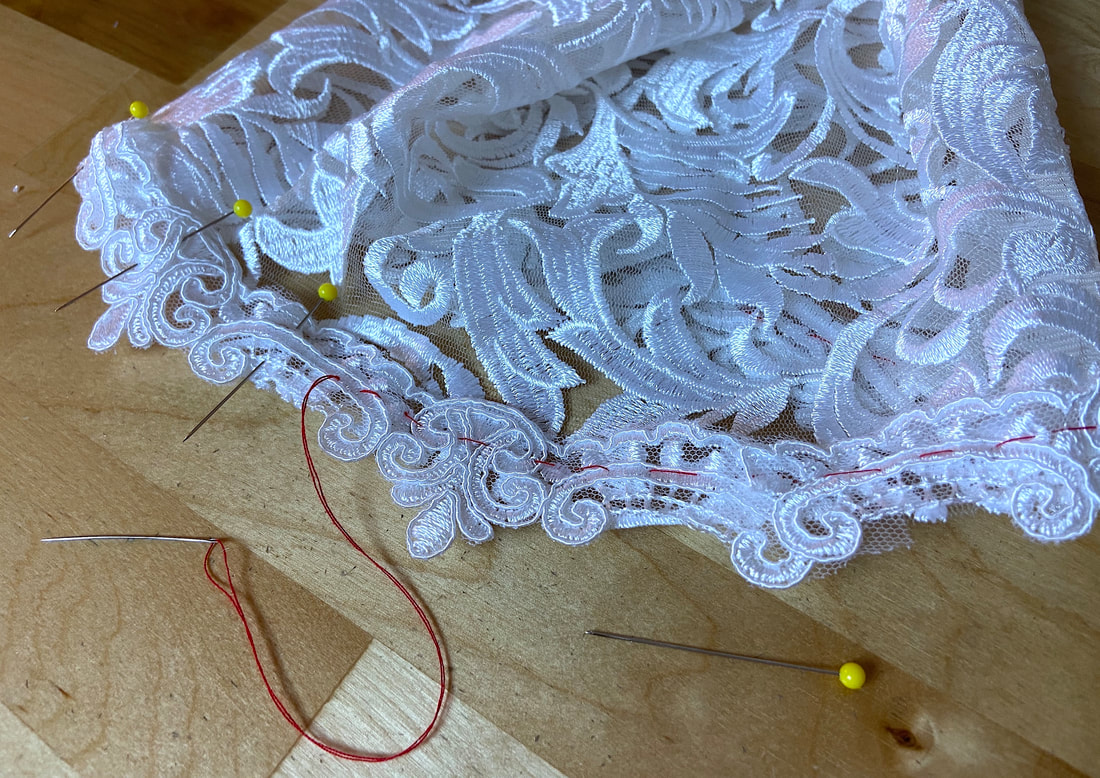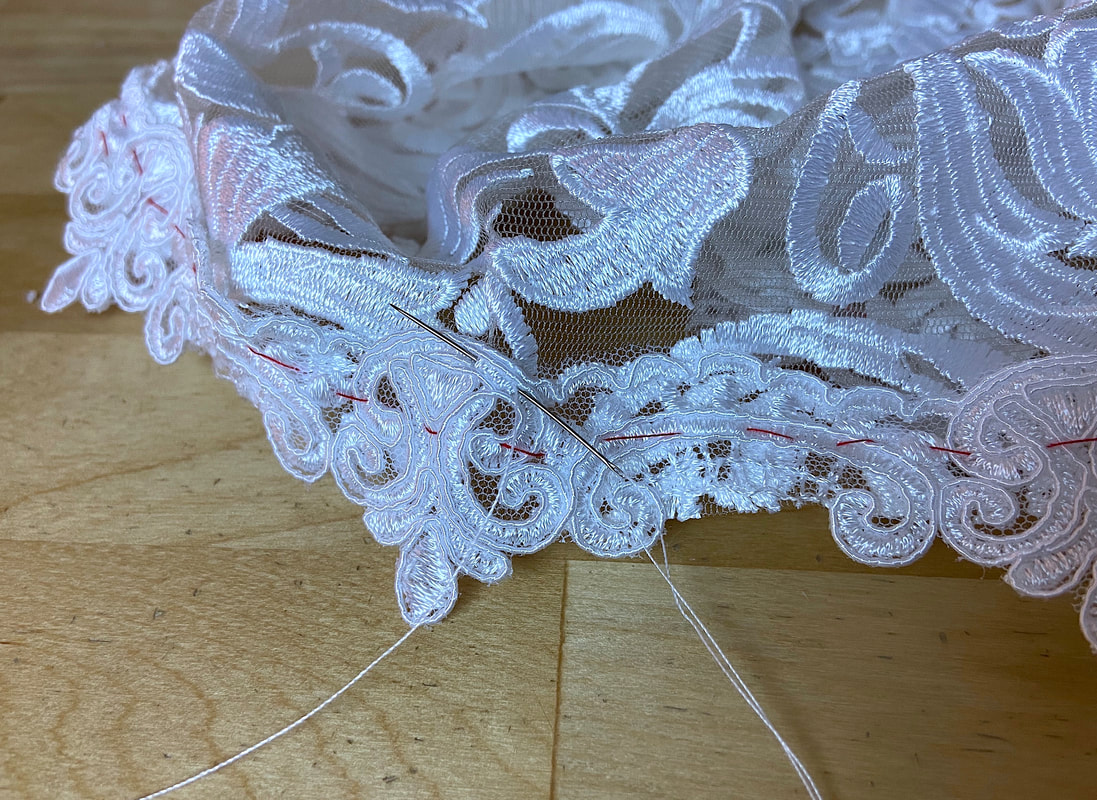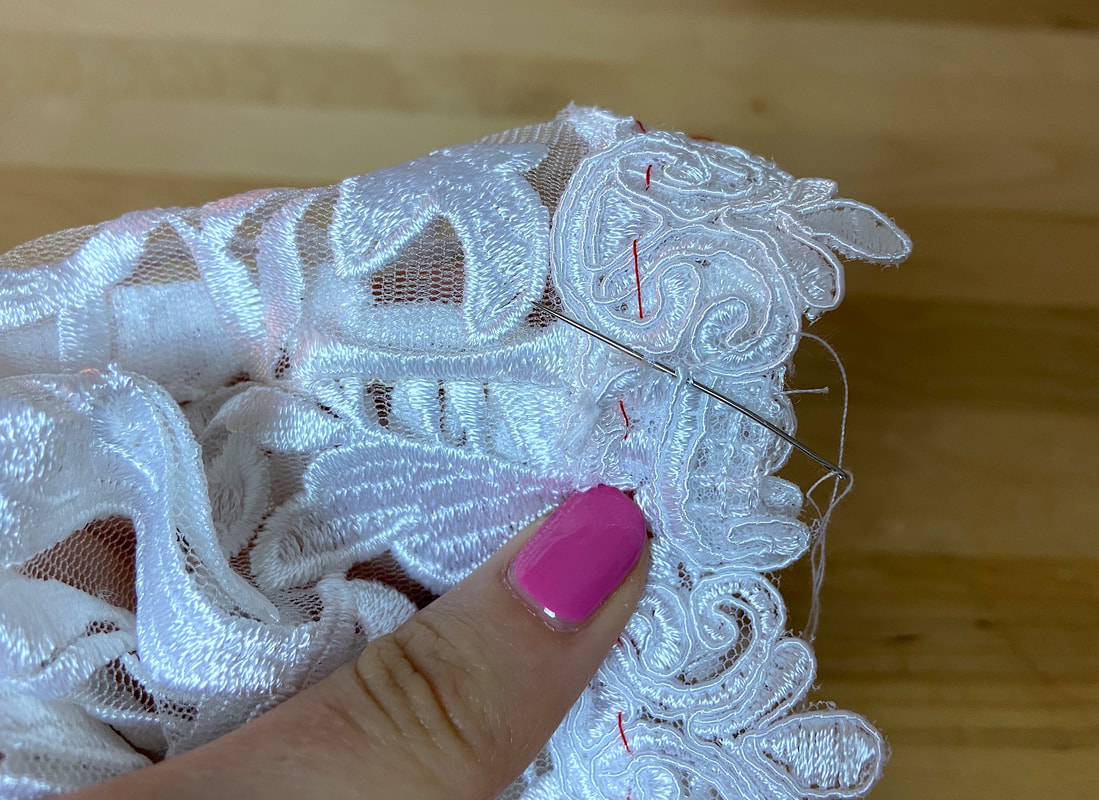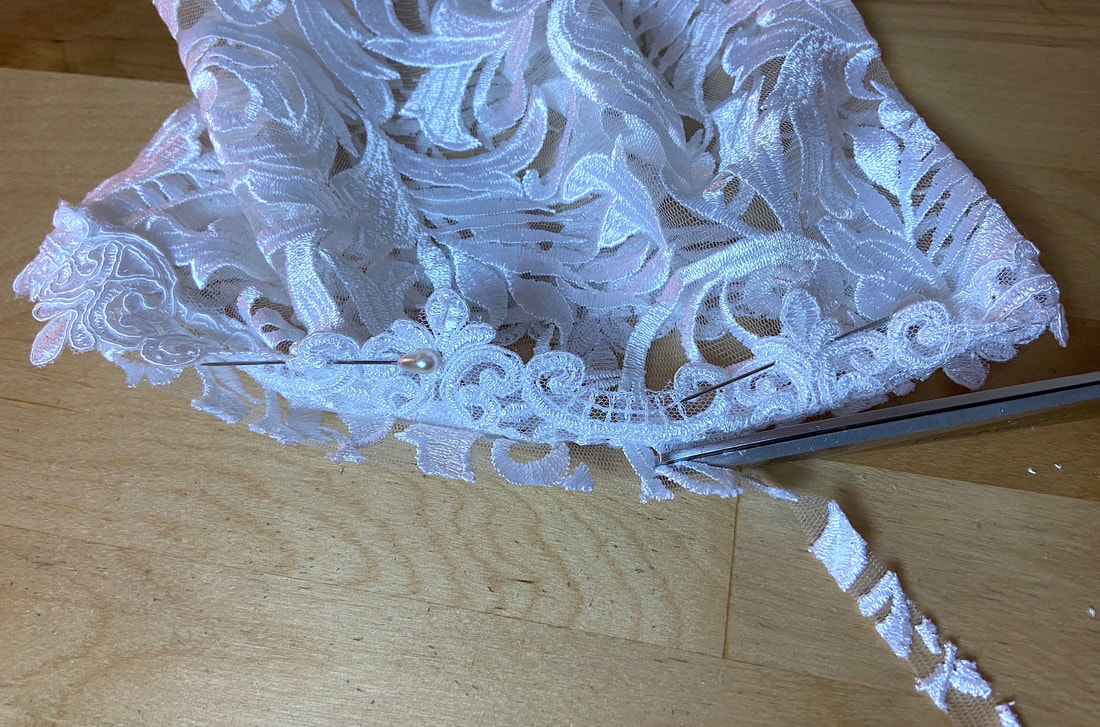Mini Tutorial: How To Finish A Lace Garment's Hem With A Trim
Although most lace fabrics do not fray when cut, the edges will still need some attention to make them look clean, professional and visually pleasing. This is especially true when finishing a lace garment's hemline. Lace is treated a bit differently than all other conventional fabrics.
Perhaps the most widely-used technique for finishing a lace hem is with a matching trim. The trim conveniently hides the lace's raw edge underneath providing a functional and semi-decorative finish. This method is highly used in bridal and evening wear.
Perhaps the most widely-used technique for finishing a lace hem is with a matching trim. The trim conveniently hides the lace's raw edge underneath providing a functional and semi-decorative finish. This method is highly used in bridal and evening wear.
Tip: When shopping for trims, take a piece of your lace fabric with you. Choose a matching trim that will either blend seamlessly with your fabric, or a contrasting one that compliments it visually.
Many trims are designed specifically to be used along the hemline, featuring a design that is easy to blend and align to your fabric's edge.
Many trims are designed specifically to be used along the hemline, featuring a design that is easy to blend and align to your fabric's edge.
1. To clean-finish a lace garment's hem with a trim, start but trimming the garment's hem allowance off. The resulting cut edge should correspond to the garment's natural hemline.
2. Align the end of your trim a little past one of the garment's seams and insert a pin to secure. The trim's bottom edge should align with the garment's edge and its wrong side should touch the garment's face side. Naturally, the garment is on its face side during this alignment process.
3. Continue aligning and pinning the trim to the garment's hem, ensuring that the hemline edge corresponds to the bottom of the trim. If your trim and lace fabric allows, insert the pins perpendicular to the edge as this will not only provide more stability, it will also make them easier to remove in the stitching process.
4. When arriving at the trim's starting point, cut the excess off, leaving another 1/2" excess (from the seamline).
5. Fold the end of the trim and align the fold with the garment's seam. This fold should overlap the beginning of the trim. Insert pins to secure the fabric layers.
Note: You may find it helpful to replace the pins with a temporary hand basting stitch as this will keep the trim aligned more accurately and stable in the steps to follow. For better visibility, use a contrast color thread so it can be removed easier when no longer needed.
At this point, if your trim is designed to be machine stitched, topstitch it to the garment layer following the trim's top edge as a guide.
In this instance, the trim has to be attached by hand. A hand-applied prickstitch is used.
At this point, if your trim is designed to be machine stitched, topstitch it to the garment layer following the trim's top edge as a guide.
In this instance, the trim has to be attached by hand. A hand-applied prickstitch is used.
6. Hand stitch the trim to the garment layer underneath following the trim's top edge as a guide. The prickstitch in this example is applied using matching color thread. The blending color will disappear into the trim's texture and lace motif.
7. Use a slipstitch to seal the folded end of the binding (from Step 4 above) to the trim layer underneath. Again, using matching color thread will allow this hand-applied stitch to disappear into the trim's texture.
8. Last but not least, lift the trim and cut the garment's excess fabric leaving only about 3/8"-1/2" of the edge underneath. This final step eliminates bulk and unnecessary thickness, providing movement and flexibility in the final trim-finished application.

